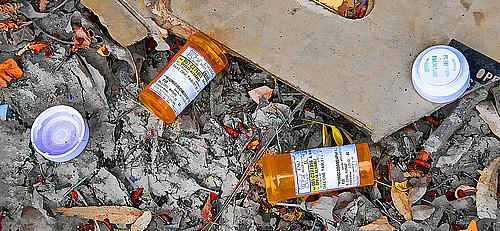Everybody Hurts: California tries to cure prescription drug tracking system

In January, the state of California will finally make good on the promises it made when launching an innovative prescription drug-tracking program four years prior.
California’s Controlled Substance Utilization, Review and Evaluation System (or CURES) was supposed to be a way for state agencies and physicians to curb prescription drug abuse. But the program was handicapped from the beginning by scant funding and poor design. The man who inspired the program, software entrepreneur Bob Pack, told me in May that the two biggest things missing were the ability to flag patients trying to get multiple drugs from multiple doctors and the ability to flag doctors prescribing too many drugs.
The first would allow doctors or pharmacists to instantly access a patient’s prescription history to see if they are doctor shopping for narcotics prior to writing a prescription. The second would serve as a reporting tool for law enforcement in the attorney general’s office to review the red flag system to find so-called dirty doctors who are over prescribing illegally for financial gain. It would be a matter of additional software upgrading to build the automatic red flag system about doctor prescribing patterns and produce reports for law enforcement on some kind of regular schedule. It hasn't happened because the CURES program is badly underfunded, and unless a new Senate bill for funding is passed this year, the whole program will shut down.
The Senate did pass a bill for new funding and much more. Starting in January, all doctors who prescribe addictive drugs will be required to register with CURES. They also will be required to pay a $6 annual fee to help fund the system. Pharmacists will be required to enter all prescription drug orders into the CURES database, and they, too, will pay a $6 fee.
California State Sen. Mark DeSaulnier (D-Concord) told Kenny Goldberg for a California HealthLine report:
The system will red flag if a doctor is giving too many opiates so they can check to see what is going on or if an individual is going around and shopping for different doctors in different places. So when the system is up within the next year to two years we will have real-time information.
Sounds pretty good, right? It could have been even better. DeSaulnier had to make some key compromises to get the bill passed. He was trying to get even more funding for the program by requiring a fee from drugmakers wanting to sell in the state. The pharmaceutical lobby shot that down. And he wanted to require all physicians to actually check the CURES database before writing a new prescription for an addictive drug. The doctors lobby shot that one down.
Only if the system can be improved over the next two years will it be likely that he or another legislator could revive those provisions. Because, frankly, the doctors make a very good point. Should doctors be forced to use a system that doesn’t work well right now?
Richard Thorp, president of the California Medical Association, told Goldberg:
It’s somewhat archaic and somewhat difficult to use, and we felt that it was important to improve the program first before we talk about any additional mandate on the physician population.
There’s no doubt that reporting by Lisa Girion and Scott Glover in the Los Angeles Times helped drive these improvements to CURES. In March 2013, Attorney General Kamala Harris told them that the new funding and program upgrades were badly needed.
Any legislator who questions the relevance or necessity of this should check with their local police chief. They'll tell them what's going on on the street.
DeSaulnier says that the upgrades that go into effect in January are a good start.
The distinction is over 200,000 prescribers, every prescriber in the state of California are mandated to be in the system and that information will then be available to the Department of Justice. … Prescription drug abuse has caused more addictions and more deaths in California than cocaine and heroin combined. So there’s an urgency to get the system upgraded.
Pack is happy that the bill passed but still thinks that more changes need to be made. He’s pushing for a voter initiative to be put on the ballot in November 2014. I’ll write more about it in a future post.
What do you think would be an effective way to better track prescription drug abuse? Let me know at askantidote [at] gmail.com or via Twitter @wheisel.
Image by Chris Yarzab via Flickr

